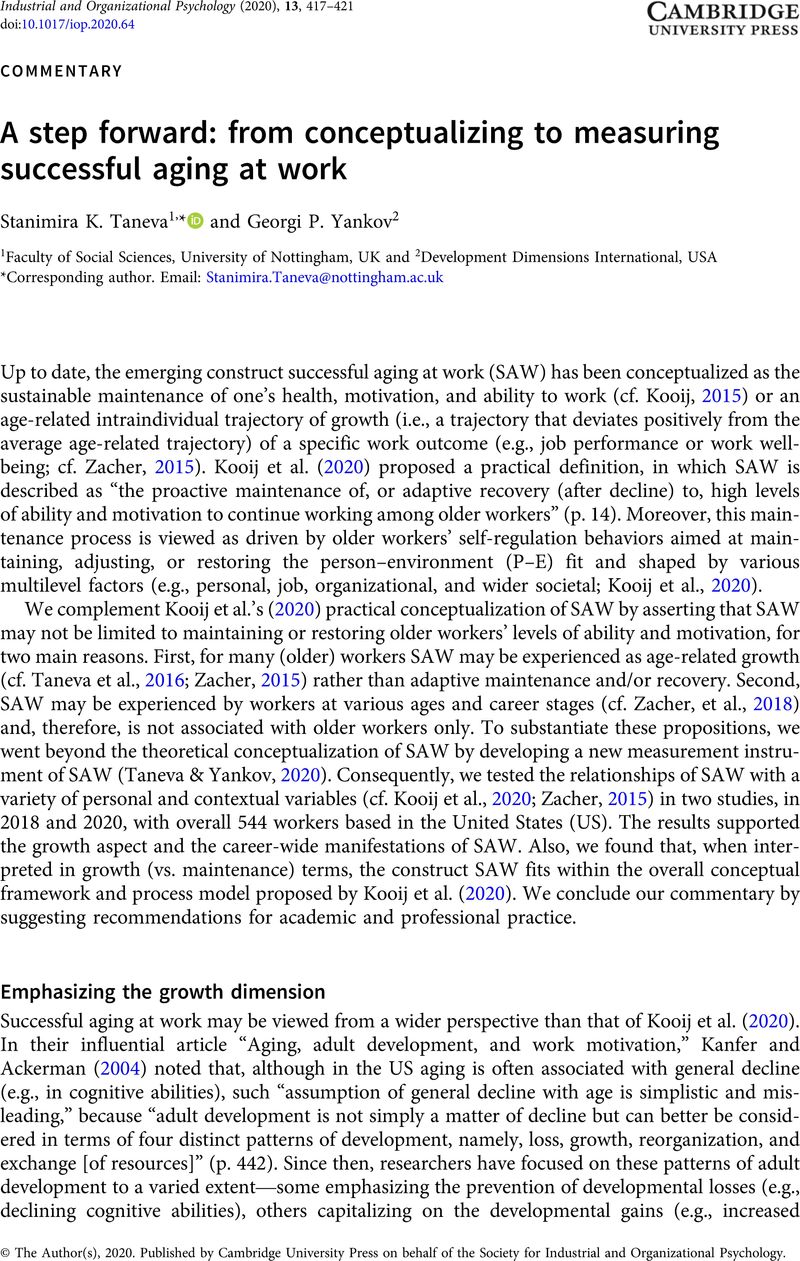Crossref Citations
This article has been cited by the following publications. This list is generated based on data provided by Crossref.
Howard, Matt C.
2022.
A more comprehensive measure of vaccine hesitancy: Creation of the Multidimensional Vaccine Hesitancy Scale (MVHS).
Journal of Health Psychology,
Vol. 27,
Issue. 10,
p.
2402.
Taneva, Stanimira K.
and
Peng, Yisheng
2024.
Fostering successful ageing at work: The role of cognitive job crafting, work certainty and perceived remaining time at work.
Journal of Occupational and Organizational Psychology,
Vol. 97,
Issue. 2,
p.
381.



